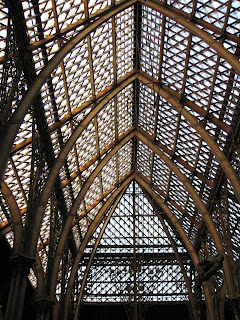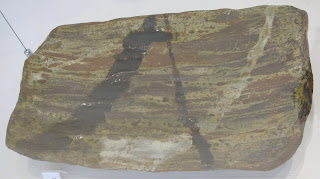 Kirsty Alman, Jewellery, Cluster collection. Inspired by the opulence of the baroque and rococo periods these are elaborate and richly textured pieces designed to make a statement. For me it is the encrusted forms, produced by drop casting molten silver, that make the collection so spectacular.
Kirsty Alman, Jewellery, Cluster collection. Inspired by the opulence of the baroque and rococo periods these are elaborate and richly textured pieces designed to make a statement. For me it is the encrusted forms, produced by drop casting molten silver, that make the collection so spectacular. Nao Fukumoto, Hand Weaving and Natural Dying, The Shell that went Travelling. Nao finds her inspiration in nature, translating the form, pattern and colours into the language of warp and weft. The interplay of vertical and horizontal creating fabrics that are at once simple to understand and yet complex in their endless variations.
Nao Fukumoto, Hand Weaving and Natural Dying, The Shell that went Travelling. Nao finds her inspiration in nature, translating the form, pattern and colours into the language of warp and weft. The interplay of vertical and horizontal creating fabrics that are at once simple to understand and yet complex in their endless variations. Rosie James, Textiles, Shed Series. Unusually for Rosie this piece is of a space rather than people, even so she manages to evoke a sense of movement that implies the active hustle that such a workplace engenders. These detailed drawings in thread on transparent cloth are enhanced by the subtle use of screen printing to give a lightly layered effect.
Rosie James, Textiles, Shed Series. Unusually for Rosie this piece is of a space rather than people, even so she manages to evoke a sense of movement that implies the active hustle that such a workplace engenders. These detailed drawings in thread on transparent cloth are enhanced by the subtle use of screen printing to give a lightly layered effect. Tara J Murphy, Jewellery, Best Before collection. Attracted to the transience and impermanence of everyday materials Tara finds beauty in the discarded and cast-off waste of the consumer society.
Tara J Murphy, Jewellery, Best Before collection. Attracted to the transience and impermanence of everyday materials Tara finds beauty in the discarded and cast-off waste of the consumer society.  This series of brooches attest to her resourcefulness in turning the unwanted into the highly desirable. These innovative pieces capture the essence of something or someone that has gone before, some even commemorating personal loss.
This series of brooches attest to her resourcefulness in turning the unwanted into the highly desirable. These innovative pieces capture the essence of something or someone that has gone before, some even commemorating personal loss. Emma Yeo, Textiles & Jewellery
Emma Yeo, Textiles & Jewellery . Emma is a multi-media designer who creates striking fashion accessories and bespoke interior installations. Her unique combination of technology and craft techniques produces intricately sculpted works that are both architectural and linear revealing an inquisitive approach to line and form.
. Emma is a multi-media designer who creates striking fashion accessories and bespoke interior installations. Her unique combination of technology and craft techniques produces intricately sculpted works that are both architectural and linear revealing an inquisitive approach to line and form.Also showing work were;
Shiho Kito, Photography
Banu Bal, Ceramics
Jackie Denham, Ceramics
Tracy Nicholls, Glass
Janice Scull, Fine Art
Shelly Doolan, Glass
Niccolo Fano, Photography












 Her interest in texture can also be seen in the surface treatment of this stoneware dish which incorporates stone and ash glaze with black and white glaze pours. (Crafts Study Centre)
Her interest in texture can also be seen in the surface treatment of this stoneware dish which incorporates stone and ash glaze with black and white glaze pours. (Crafts Study Centre)




 Amy Houghton
Amy Houghton Anna Glasbrook
Anna Glasbrook











 Gail Baxter uses hand made paper to reference the sedimentation process by which archives are formed. The dramatic impact of her installation of paper lace cubes comes not from the delicate white tracery of the lace itself but from the effective use of lighting to draw new patterns on the walls. The angled lighting highlighting the different impression that is obtained according to one's point of view.
Gail Baxter uses hand made paper to reference the sedimentation process by which archives are formed. The dramatic impact of her installation of paper lace cubes comes not from the delicate white tracery of the lace itself but from the effective use of lighting to draw new patterns on the walls. The angled lighting highlighting the different impression that is obtained according to one's point of view.








